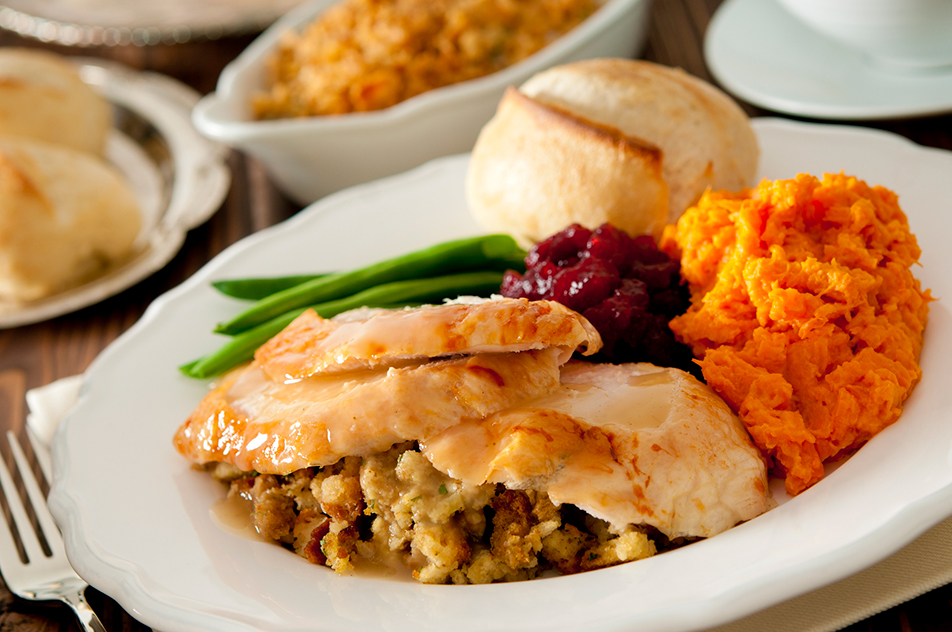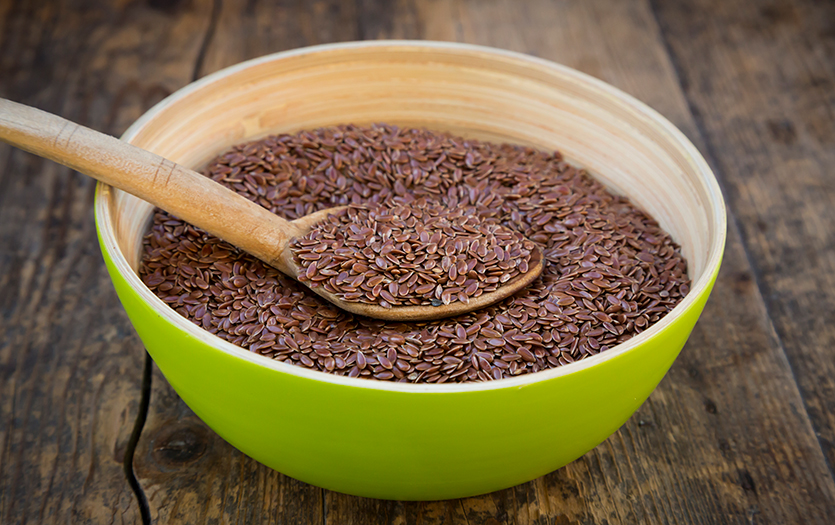
Thanksgiving is a holiday filled with festivities, family and favorite dishes. But all those Turkey Day treats can add up to unwanted weight gain. According to the Calorie Control Council, it’s estimated that Americans take in 3,000 calories during a single Thanksgiving dinner, and often consume closer to 4,500 calories with appetizers, dinner and dessert. Being mindful this holiday season doesn’t mean you have to miss out. Here are a few tips to help you navigate that tempting spread without feeling stuffed.
Food Safety
- Always prepare food to its proper temperature. The USDA advises cooking a turkey until it has reached 165 degrees. If you plan on stuffing your bird, the stuffing must reach 165 degrees as well. This is important because the stuffing will soak up all the raw juices inside the turkey and if it doesn’t reach the proper temperature you could get sick. Instead, try making the stuffing on the side with turkey stock and stuff your turkey with aromatic herbs, an apple, carrots, onion, celery or citrus.
- Food shouldn’t sit out on the counter for more than 2 hours after serving. Keep warm dishes in slow cookers and cold dishes over ice. Pies made with egg-based fillings (including pumpkin pie) should be refrigerated after baking, especially if you aren’t consuming them within 2 hours.
- Carve leftover meats off the bone prior to storing in the refrigerator or freezer. Divide cooked dishes into smaller portions before refrigerating or freezing. It’s important to store dishes in shallow containers so that they cool off quickly and reach a safe temperature once in the refrigerator. Most leftovers in the refrigerator should be consumed within 3-4 days.
Relish over regret
- Don’t show up to the party starving. Eat a nutritious breakfast and lunch if your Thanksgiving dinner isn’t until later in the day. If you’re hungry while cooking, munch on raw veggies with hummus or fruit and nuts.
- Stay hydrated. Drinking enough water will help you properly digest food, absorb their nutrients and make you feel fuller.
- Make your favorite dishes from scratch instead of a package. This will allow you to cut back on salt, fat and calories. For example: Add more vegetables to your stuffing recipe; make sweet potato casserole with baked sweet potatoes and chopped caramelized walnuts; steam green beans and toss with lemon and dill; use turkey sausage instead of pork sausage; substitute olive oil for butter; bake your turkey instead of frying it; and try showcasing only 1 or 2 of your favorite pies instead of offering several desserts.
- Slow down and take your time when eating. Try to make a conscious effort to chew each bite slowly. Take a moment to really taste your food and enjoy your meal. It may be helpful to speak with friends and family between bites to keep you from hastily eating your entire plate of food.
- Enjoy a little bit of everything. Instead of filling your plate with large portions and indulging in seconds, try getting a smaller portion of all the foods you want to enjoy. Remember, the recommended serving size for protein is 3 ounces (the size of a deck of cards).
- Make mindful choices. Fill up on turkey, salad and non-starchy vegetables like brussels sprouts, asparagus, green beans, carrots, bell peppers, mushrooms, broccoli and cauliflower. These are low-calorie foods that pack a nutritional punch.
- Cut desserts into smaller portions. Your guests can try a variety of treats without filling up or overindulging.
- Go easy on the alcohol. It can easily pack on the calories, especially the sugary holiday drinks.
Dietary restrictions
- Do your homework. If you aren’t familiar with how to cook for a family member that has specific dietary needs, research the information online and look up new recipes that will allow them to enjoy a few holiday dishes.
- Check the label. Remember to check your ingredients for common allergies or dietary restrictions, including wheat, milk and MSG, which can be found in several brands of gravy.
- Don’t overthink it. Choose simple dishes to make that can meet dietary restrictions such as:
- Roasted vegetables or salads
- Mashed potatoes, sweet potatoes or cauliflower (using lactose-free milk if needed)
- Gluten-free crackers with cheese and apple slices
- Stuffing made with gluten-free bread or cornbread
- Crustless pumpkin pie
- Roasted butternut squash soup
- Gluten-free or dairy-free baked goods
- Let them decide what to bring. Those family members with dietary restrictions can prepare and bring a few items they know they can eat while introducing the rest of the family to a new holiday dish.
No matter what you decide to put on your plate, remember to savor the company of those you love this Thanksgiving, and carve out time for rest and reflection.



